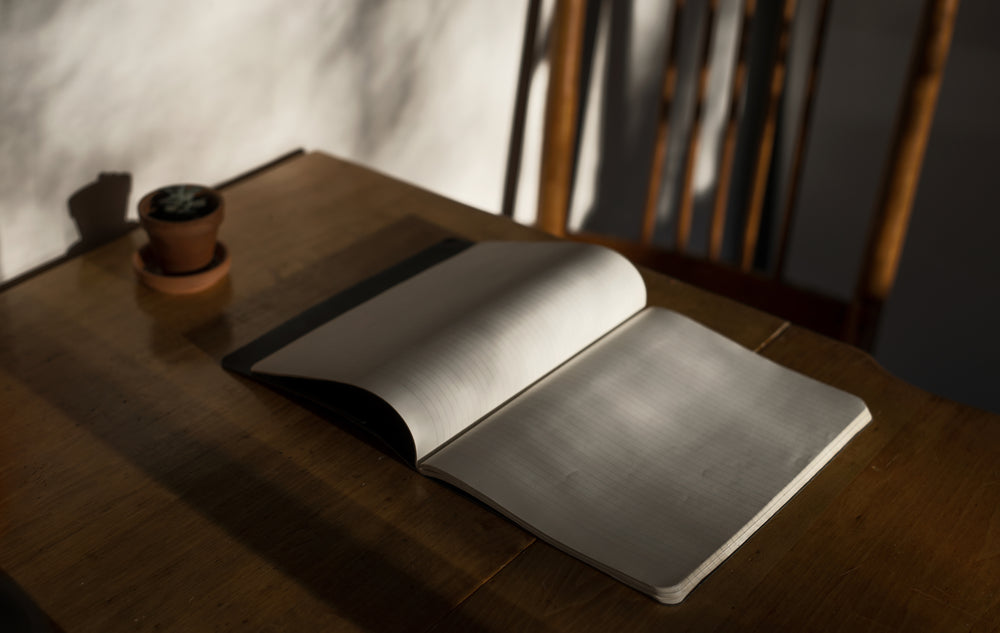Bullet Journal for Busy Parents: Manage Kids’ Schedules, Meals, and Errands
Let’s be real—being a parent means juggling a million things at once: school drop-offs, soccer practice, last-minute grocery runs, and remembering to sign that permission slip (again!). When your brain feels like a chaotic to-do list, a bullet journal (BuJo) is your secret weapon. It’s not just a notebook—it’s a one-stop spot for all your family’s chaos, built to keep you calm and in control.
Below are the exact family-focused spreads that saved my sanity as a parent of two. These layouts are simple, flexible, and made for busy days—no fancy art skills needed.
1. Weekly Meal Plan: End the "What’s for Dinner?" Panic
If you’ve ever stared at your fridge at 6 PM wondering how to turn milk and half a bag of spinach into a meal, this spread is for you. It cuts down on decision fatigue and those impulsive takeout runs.
How to Set It Up:
- Page Layout: Split a two-page spread into 7 columns (one for each day). Write the day at the top (like "Mon," "Tue").
- Key Sections to Add:
- Meals: List breakfast, lunch, dinner, and snacks under each day (e.g., "Mon Dinner: Turkey Tacos").
- Grocery List: At the bottom, add a "Need to Buy" section—jot down ingredients you’re missing (taco shells, lettuce, salsa).
- Prep Notes: A tiny "Prep" column for reminders like "Marinate chicken Sun night" or "Chop veggies Mon morning."
Pro Tip:
Keep it flexible! If your kid refuses the planned pasta, swap it for a backup (like "Backup: Frozen pizza")—note that in the margin so you’re not caught off guard.
2. School & Activity Calendar: Never Miss a Field Trip (or Soccer Game)
Between parent-teacher conferences, school plays, and after-school activities, it’s easy to let a date slip. This spread turns random flyers and text reminders into a clear schedule.
How to Set It Up:
- Page Layout: Use a two-page spread for a monthly overview. Draw a grid (7 rows for days, 5 columns for weeks) or keep it simple with a list (one row per day).
- Color-Code for Clarity: Assign a color to each kid or activity (blue for "Lila’s school," green for "Jake’s soccer"). It lets you scan and see who needs to be where, fast.
- Add Important Details:
- School events: Write time, location, and must-bring items (e.g., "Fri 10 AM: Lila’s art show – bring a folding chair").
- Activities: Note drop-off/pickup times and gear (e.g., "Wed 4 PM: Jake’s soccer – pack cleats + water bottle").
Pro Tip:
Stick a sticky note on the current week for last-minute changes (like "Soccer moved to Thu!"). Tear it off when the week ends to keep the page clean.
3. Chore Chart: Teach Responsibility (and Lighten Your Load)
Getting kids to help with chores doesn’t have to be a battle—especially when they can see their progress. A BuJo chore chart turns tasks into a game and teaches accountability.
How to Set It Up:
- Page Layout: Make a table with 3 columns: "Kid’s Name," "Chores," and "Weekly Check-In."
- Age-Appropriate Chores: For younger kids (5–8): "make bed," "put toys away," "set the table." For older kids (9+): "load dishwasher," "fold laundry," "take out trash."
- Reward System: At the bottom, add a "Reward Tracker" (e.g., "5 chores = 30 mins screen time" or "10 chores = park trip"). Use checkmarks or stickers—kids love filling those boxes!
Pro Tip:
Review the chart together every Sunday night. Ask your kids which chores they want to do that week—giving them a choice makes them more likely to follow through.
4. Quick Note Section: Catch Those "Don’t Forget!" Moments
We’ve all been there: driving to work and suddenly remembering you need diapers, or your kid mentions a school bake sale tomorrow. This spread is for those "I’ll forget this in 5 minutes" reminders.
How to Set It Up:
- Page Layout: Reserve the first few pages (or a dedicated section) for "Quick Notes." Label the top "Don’t Forget!" and leave the rest blank.
- Symbols to Prioritize:
- "!" = Urgent (e.g., "! Buy bake sale cookies tonight").
- "\(" = Needs money (e.g., "\) Pay field trip fee by Fri").
- "📞" = Need to call/text (e.g., "📞 Text Sarah’s mom about playdate").
- Clear It Daily: At the end of each day, move unfinished notes to the next day or cross them out if done. Keeps the page from getting messy.
Pro Tip:
Keep your BuJo somewhere you’ll see it every day—by the front door, on the kitchen counter, or in your purse. Jot down reminders as soon as they pop into your head.
Final Thoughts: Make It Work for Your Family
The best part about a BuJo is it’s customizable. Don’t cook every night? Simplify the meal plan. Kids too young for chores? Skip that spread (for now!). The goal isn’t a "perfect" journal—it’s one that makes your busy life easier.
Start small: Pick one spread (like the meal plan) and try it for a week. Once you get the hang of it, add another. Before you know it, your BuJo will be your go-to for keeping track of all the little (and big!) family moments.
Here’s to less stress, more organization, and plenty of time for the good stuff—snuggles, laughter, and maybe even a few quiet minutes (fingers crossed!).




Leave a comment